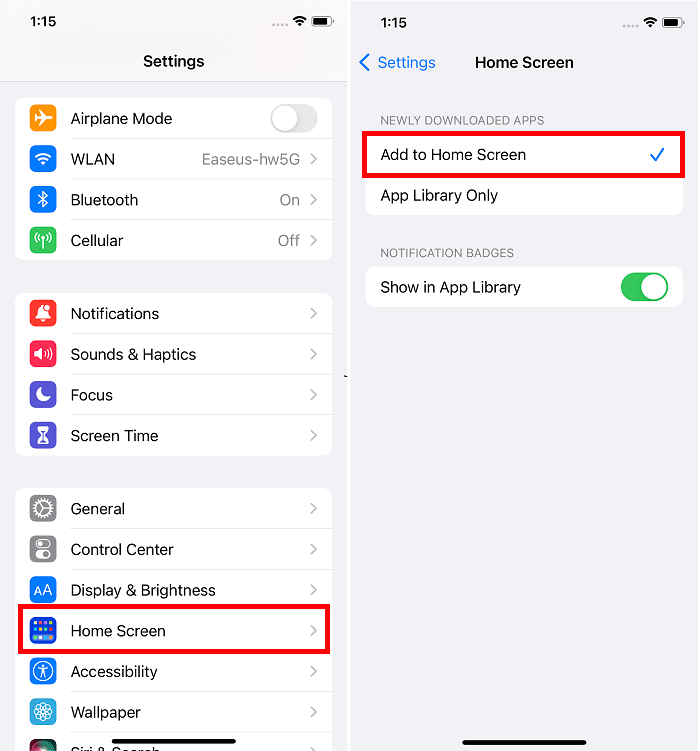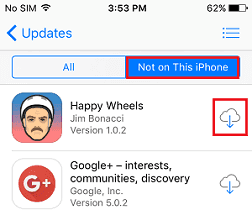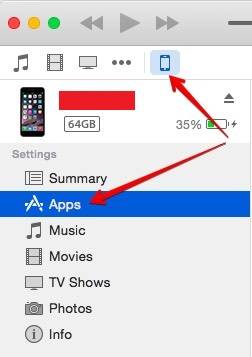How to Recover Deleted Apps on iPhone/iPad
Deleting files on an iPhone is a straightforward process, but it's essential to back up important data before doing so, as all associated content will be removed. To delete an app, simply long-press on the icon and tap the "x" in the top left corner. However, accidents can still happen, especially if children are using the device, and in such cases, finding deleted apps on an iPhone may require additional measures.
To find recently deleted apps on your iPhone, follow these steps. First, open the Settings app and scroll down to the "General" section.
Tips: To prevent kids from deleting or downloading apps, go to Settings > Screen Time > Content & Privacy Restrictions > iTunes & App Store Purchases > Deleting Apps, and tap "Don't Allow" on iOS 12 or later.
Part 1. Common Solutions to Find Deleted Apps on iPhone or iPad
Finding deleted apps on your iPhone or iPad can be a necessity in various situations. You may need to locate a deleted app to reinstall it, recover data from the app, or simply because you accidentally deleted it. Whatever the reason, knowing how to find deleted apps on your device is essential.
- If you're unable to restore an app from the App Store but can still find it from the Home Screen through the search bar, it's likely due to a minor issue with the App Store's cache or a glitch. Try closing the App Store app, restarting your device, and then attempting to restore the app again.
- If an app is not showing up on the Home screen after reinstalling it, you can try restarting your device, checking the app's settings, or looking for it in the App Library. If none of these steps resolve the issue, you may need to reinstall the app again or contact the app's developer for further assistance.
- Delete some built-In apps like Calendars and Maps, you can't reinstall them once they're deleted, as they're pre-installed by the manufacturer and are an integral part of the operating system.
If you're having trouble, try these solutions to find and recover deleted apps.
Solution 1. Find Deleted Apps from App Library
If you've changed the settings to hide your apps before deleting them on iOS 14, you can redownload apps from the App Store and then unhide them by going to Settings > Home Screen > Add to Home Screen.

Tips: If the solution doesn't work, try restarting your iPhone or updating it to the latest version, which often includes bug fixes and security patches.
Solution 2. Reinstall the App from App Store
You can also find deleted apps by reinstalling them from the App Store, regardless of whether you purchased them. To do this, follow these steps.
If you want to reinstall non-purchased apps:
Step 1. On your iPhone or iPad, go to the App Store.
Step 2. Search for the app you want to reinstall.
Step 3. To restore the app, tap the cloud icon when it appears.
Step 4. Wait for the app to restore, and you can open it from your Home screen. Once restored, you can open the app and it will function normally.

If you want to reinstall purchased apps:
Step 1. On your iPhone or iPad, go to the App Store.
Step 2. Tap on "Updates" at the bottom of the screen.
Step 3. Click "Purchased" to see all purchased Apps in your account.
Step 4. On your iPhone or iPad, go to the App Store, tap your profile icon, then tap "Not on This iPhone/iPad" to view all the apps you've purchased but aren't currently installed on your device. This allows you to re-download apps you've previously purchased but have since uninstalled.
Step 5. To re-install an app that was previously deleted, find the app you want to re-install on your iPhone or iPad, click the "Download Arrow" next to it, and the app will be re-installed on your device.
Solution 3. RetrieveDeleted Apps on iPhone/iPad from iTunes
If iTunes is functioning properly and you're not experiencing issues like iTunes failing to sync with your iPhone, you can use it to restore a deleted app.
Step 1. Connect your iPhone or iPad to your computer using a USB cable, and if iTunes doesn't launch automatically, open it manually.
Step 2. Select your iPhone or iPad from the list of available devices.
Step 3. Click "Apps" in the "Settings" section.
Step 4. Find the App you want to re-install, click "Install" next to it.

Note: If you've re-downloaded deleted apps on your device but can't see them on your screen, check if you've enabled Restrictions for these apps on your iPhone, iPad, or iPod. To do this, go to Settings > General > Restrictions, and see if the apps are listed under "Allowed Apps" or "Blocked Apps". If they're listed under "Blocked Apps", this means you've restricted access to them, and you won't see them on your screen.
- Go to the Settings.
- Tap the"Screen Time"
- Tap the "Content &Privacy Restrictions."
- To recover your data, tap on "Settings" and then "Google Account" (or "Apple ID" for iOS devices). Next, tap on "Allowed Apps" and ensure the switches next to the apps you want to recover are turned on. This will allow you to access your data from those apps.
Part 2.Recover Deleted Data from iPhone/iPadwith Qiling MobiSaver
As you can see, you can re-If you delete an app from the App Store or iTunes, you can easily redownload it whenever you want. However, for other iOS files like contacts, messages, and photos, deletion is permanent and requires alternative methods to recover them.
If you have a backup, you can directly restore your iPhone from iTunes or iCloud backup, but if you don't have a backup, you'll need to use a tool like Qiling MobiSaver, an iPhone data recovery tool, which you can install on your computer to recover your lost data.
- Recover lost files, documents, videos, pictures, and more
- Preview your deleted data before recovering
- Recover data from iTunes or iCloud backup
- Get lost data backup without backup
To recover data from your iPhone, iPad, or iPod, simply download the program on your computer and follow the steps provided. This will guide you through the process of retrieving your lost or deleted data.
Step 1. Connect iPhone to Your PC
Launch Qiling MobiSaver, click "Recover from iOS device" and then click "Start".
Step 2. Scan for Lost iPhone Data
Qiling MobiSaver will automatically scan your iPhone/iPad/iPod, finding both present and potentially lost data, and you just need to wait for the scan to finish.
Step 3. Click the "Recover" Button
You can select the lost data you want to recover, such as photos, videos, contacts, SMS, notes, voice mails, and other files, and save them to a different location.
Part 3.Back Up iPhone or iPad to Prevent Data Loss
Backing up your iPhone data is essential, especially if you've found deleted apps on your device. To ensure you can recover important files in case of a system crash or data loss, you can use Apple's online (iCloud) and offline (iTunes) backup solutions. However, these methods have limitations, making it necessary to explore alternative workarounds for a more efficient and scientific backup process.
To use this method, you'll need Qiling MobiMover, our favorite iPhone data transfer software, previously installed on your computer. This software offers an extensive list of features, although some are irrelevant to iPhone backup, and can help organize your device's data.
To back up iPhone or iPad:
Step 1. To backup your iPhone/iPad, connect it to your PC with a USB cable, click "Trust" on your device, and then launch Qiling MobiMover. From there, click on "Backup Manager" and select "Back up" to initiate the backup process.
Step 2. Determine the types of files you need to backup, then click the backup button to initiate the backup process for your iPhone or iPad.
Step 3. The backup process will take some time to complete, depending on the size of the content. Please wait patiently for it to finish.
Here are the features of Qiling MobiMover in one paragraph:
- Transfer data from PC to iPhone
- Move data between two iOS devices
- Back up iPhone or iPad with ease
- Transfer WhatsApp to new iPhone
- Convert HEIC pictures to JPG
The Bottom Line
With the methods in this guide, you can quickly recover deleted apps on your iPhone, iPad, or iPod. To avoid data loss in the future, we recommend installing Qiling MobiSaver on your computer, a tool that can help you recover your data anytime and anywhere.
Frequently Asked Questions About iPhone Deleted Apps
Want to know more details about iPhone deleted apps? If you do, below are some frequently asked questions about iPhone deleted apps. Now, you can check these questions and their answers. (Note: there is no actual content provided in the original message, so I couldn't add any details or answers)
1. How to see recently deleted apps?
If you accidentally deleted an app on your iPhone but didn't know which one, you can go to the App Store, tap your profile on the top right, and select Purchased. Then, tap on the "Not on this iPhone" tab to preview only deleted apps.
2. How to delete app history on iPhone?
To delete an iPhone app's history, you can either clear storage space or delete history on the app itself. Go to Settings > General > Storage & iCloud Usage > Manage Storage, find the app taking up most space, and remove it from your device. Alternatively, delete history on the app directly.
To delete app history, go to Settings, select the app, and choose "Clear History and Data" to remove history on that app. Repeat this process for other apps you want to delete history from.
3.How can I reinstall the default apps I deleted on my iPhone?
To reinstall a deleted default app, open the App Store, search for the app in the search bar, and select it to download.
Related Articles
- How to Download Contacts from iCloud to PC
- How to Transfer Files from iPhone to PC in 6 Ways
- How to Print WhatsApp Messages Easily and Quickly
- Backup Windows 10 PC to QNAP NAS Step by Step
QNAP NAS is good for backup. Learn how to backup Windows 10 PC to QNAP NAS network storage with step-by-step guide to ensure your Windows 10 computer is protected.